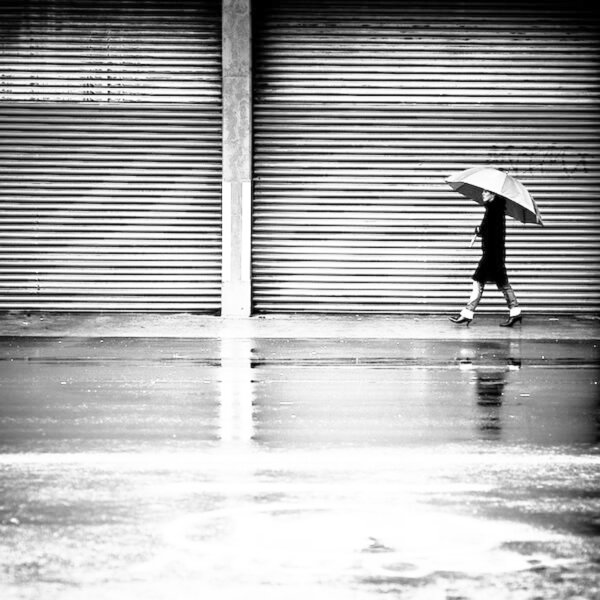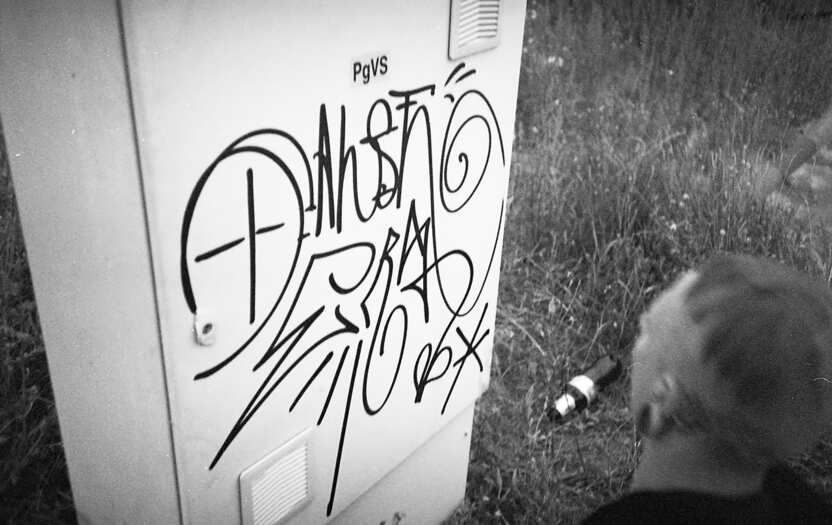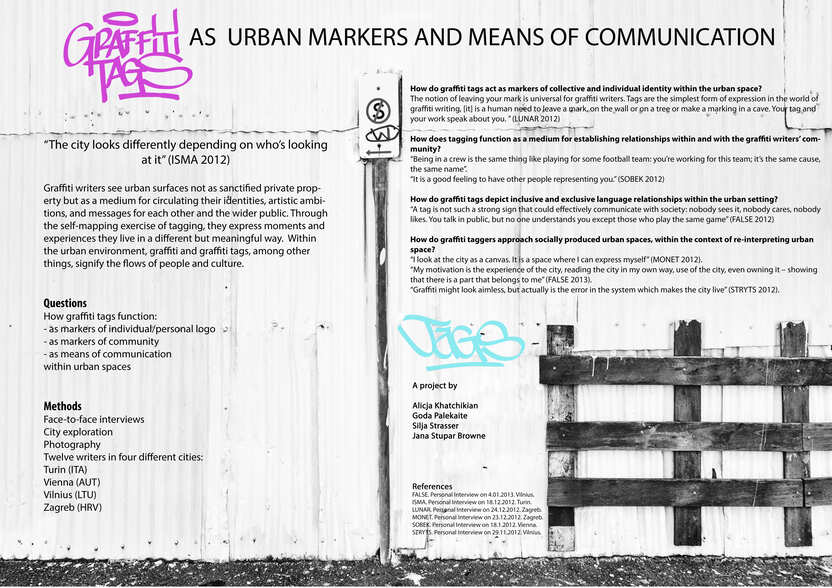
Visuelle Untersuchung
Zwischen Kunst und Sozialwissenschaft /
Visuelle Untersuchung ist ein Versuch, sozialwissenschaftliche Fragen mit künstlerischen bzw. visuellen Mitteln kreativ zu beantworten. Es wird immer häufiger von zeitgenössischen KünstlerInnen sowie AnthropologInnen, die sich mit visuellen Methoden beschäftigen, betrieben.
Die Hauptmethoden der visuellen Anthropologie, die in einer visuellen Untersuchung angewendet werden, sind: Analyse des Raums (die Geschichte, der Einsatz, die Pläne, die Objekte am Ort, etc.), Beobachtung am Ort, Interviews / Gespräche mit Betroffenen, Fotografie, Video, Skizzen, Mapping, etc.
Am Beispiel von urbaner Anthropologie: 2012-13 hat ein internationales Team von KünstlerInnen/AnthropologInnen ein Projekt über Graffiti Tags in vier Europäischen Städten (Turin, Wien, Vilnius und Zagreb) betrieben, mit dem sie versucht haben, Fragen zu urbanen Räumen, Tagger‘s Community und Tags-Sprache zu beantworten.

Die ForscherInnen haben Gespräche mit Graffiti-Künstlern, city exploration und Fotografie als Hauptmethode ausgewählt. Das endgültige Ergebnis der visuellen Untersuchung kann sehr unterschiedlich aussehen: Im Fall des Graffiti-Projekts haben wir eine grafische Darstellung der Interviews und eine fotografische Serie, weitere mögliche Formate wären bspw. Modell, Skizzen, Zeichnungen oder mixed media.

Questions / How graffiti tags function within urban spaces:
- as markers of individual / personal logo
- as markers of community
- as means of communication
How do graffiti tags act as markers of collective and individual identity within the urban space? /
»The notion of leaving your mark is universal for graffiti writers. Tags are the simplest form of expression in the world of graffiti writing, [it] is a human need to leave a mark, on the wall or on a tree or make a marking in a cave. Your tag and your word speak about you.« (LUNAR 2012)
How does tagging function as a medium for establishing relationships within and with the graffiti writers´ community? /
»Being in a crew is the same thing like playing for some football team: you´re working for this team; it´s the same cause, the same name.«
»It is a good feeling to have other people representing you.« (SOBEK 2012)
How do graffiti tags depict inclusive and exclusive language relationships within the urban setting? /
»A tag is not such a strong sign that could effectively communicate with society: nobody sees it, nobody cares, nobody likes. You talk in public, but no one understands you except those who play the same game.« (FALSE 2012)
How do graffiti taggers approach socially produced urban spaces, within the context of re-interpreting urban space? /
»I look at the city as a canvas. It is a space where I can express myself.« (MONET 2012)
»My motivation is the experience of the city, reading the city in my own way, use of the city, even owning it - showing that there is a part that belongs to me.« (FALSE 2013)
»Graffiti might look aimless, but actually is the error in the system which makes the city live.« (STRYTS 2012)
Kurstipp: Visuelle Untersuchung